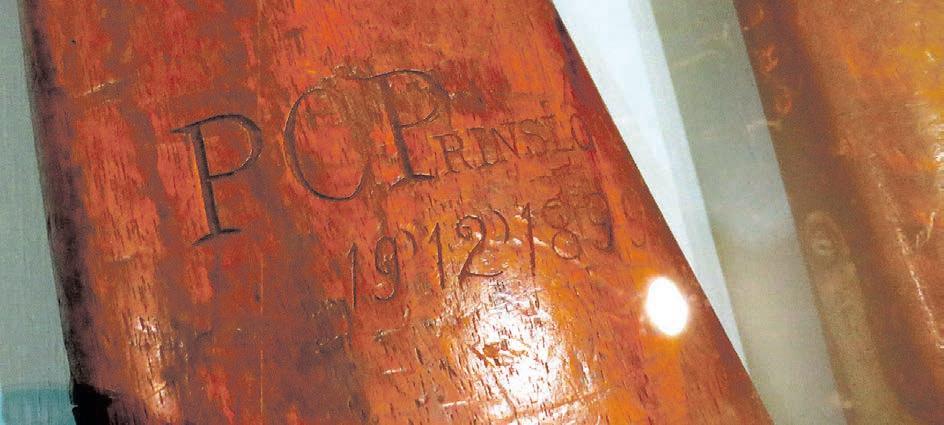
1 minute read
Prinsloo war rifle curiosity
Gareth Winter
Among the firearms displayed in the ‘Masterton Museum – A Cabinet of Curiosities’ exhibition at Aratoi is a bolt action Mauser rifle engraved with the date December 19, 1898 and with the name of “P C Prinsloo”.
The Prinsloo name was a well-known one to Masterton citizens at the time of the South African War, as one of the Boer commanders was General Marthinus Prinsloo. His capture in July 1900, along with 4000 of his men, made headlines in newspapers across the British Empire.
However, the Masterton Museum gun did not belong to him. A hunt through South African war records suggests that the likely owner was Philippus Carolus Prinsloo, a relative of the general. He was born in 1880 and was recorded as being captured in 1901.
The rifle was presented to the Masterton Museum in 1914 by Francis Marion Bates ‘Frank’ Fisher. He was the son of Wellington mayor George Fisher, and a cousin of Percy

Fisher who built the first aeroplane to fly in the Wellington region when his monoplane flew at Pigeon Bush, Featherston, in 1912.
A model of the plane marks the site of later flights at Hurunuiorangi, near Gladstone.
Frank Fisher was a champion tennis player, reaching the semi-finals of the doubles at Wimbledon. He was also an astute politician, serving as a cabinet minister known as ‘Rainbow Fisher’ through his switching of allegiance. He served under four different banners from 1905 until his defeat in the 1914 election.

He visited Masterton in March 1914 as part of a political campaign – at the time he was the Minister of Customs and Marine. Before delivering a speech at the Masterton Town Hall he visited the Masterton District High School, the site of the recently moved Masterton Museum. He was clearly impressed with what he saw, as the local MP, George Sykes, forwarded a letter from Fisher saying he was very interested in the visit to the school and the excellent museum attached to it. He offered a few mementoes in the shape of material he gathered while serving with the New Zealand forces in the South African War.
As well as the Prinsloo rifle, which he pointed out had been involved in several campaigns, he also donated some Kaffir bead and brass work, in the shape of women’s belts, necklets and wristlets. He apologised that they were not of great financial value but hoped they might serve as a relic of a war in which
New Zealand played her part in the defence of the British Empire.
It was not his first donation to a museum. In 1903, shortly after his return from South Africa, he donated two Kaffir clay figures, probably used as fetishes, to the Canterbury Museum in Christchurch.
Frank Fisher died in 1960, Philippus Prinsloo died in 1964.








